Fractions Teaching Resources
Teaching fractions? Explore printable fractions worksheets, Google slides activities and more Australian V9 curriculum-aligned teaching resources for your primary maths lesson plans — all created by primary teachers for primary teachers like you!
Explore editable resources you can easily differentiate for individual learners to help students understand what a fraction is, how to add fractions and more!
This collection of curriculum-aligned printable and digital resources has been created just for teachers by the teachers on the Teach Starter team. That means each resource has undergone an in-depth review before publication to ensure it's ready for the classroom and your students!
New to teaching this section of the maths curriculum? Read on for a guide to definining fractions, dividing fractions and so much more from our teacher team!
What Are Fractions? A Kid-Friendly Definition
It may be basic, but we need to start somewhere. Here's a definition from our teacher team: Fractions are mathematical expressions that represent a part of a whole or a ratio of two quantities.
Fractions can be used to represent quantities that are not whole numbers, and they are an important part of arithmetic, algebra and other areas of maths that our students explore throughout their primary (and secondary) education.

Understanding numerators and denominators is an essential skill as students dive into adding, subtracting, multiplying and dividing fractions.
Next, let's explore the most common topics we cover when we're teaching fractions!
Proper Fractions vs. Improper Fractions
Teaching fractions involves teaching students a lot of new vocabulary! Two terms your maths students will need to know early on in your lessons are:
- Proper Fractions — This is a fraction where the numerator (the top part) is less than the denominator (the bottom part). A proper fraction represents a value that is between 0 and 1. For example, 1/2 is a proper fraction because the numerator (1) is less than the denominator (2).
- Improper Fractions – This is a fraction where the numerator is greater than or equal to the denominator. An improper fraction represents a value that is greater than or equal to 1. For example, 3/2 is an improper fraction because the numerator (3) is greater than the denominator (2).

What Is the Lowest Common Multiple? A Kid-Friendly Definition
Working on fractions with your upper years students? You may be tackling the lowest common multiple this school year. So let's talk about what that means. The lowest common multiple is another important term to define before adding, subtracting or comparing fractions.
Sometimes called the LCM, the lowest common multiple of two or more numbers is the smallest positive integer that is divisible by all of the numbers.
In order to find the LCM of two or more numbers, you can teach students to use one of several methods, including:
- The prime factorisation method
- The listing method
- The division method

- Plus Plan
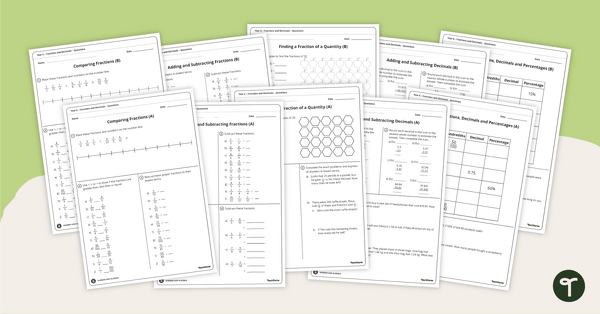
Year 6 Fractions, Decimals and Percentages Worksheets
Use these fractions, decimals and percentages worksheets in your Year 6 classroom for independent practice or as an assessment activity.
- Plus Plan
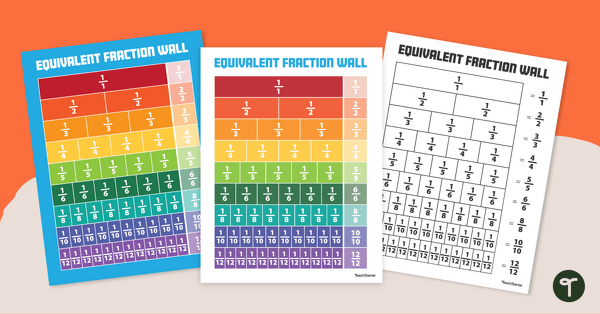
Equivalent Fraction Wall Poster
Guide students to develop an understanding of fractions with the same value by using an equivalent fractions chart in your classroom.
- Plus Plan
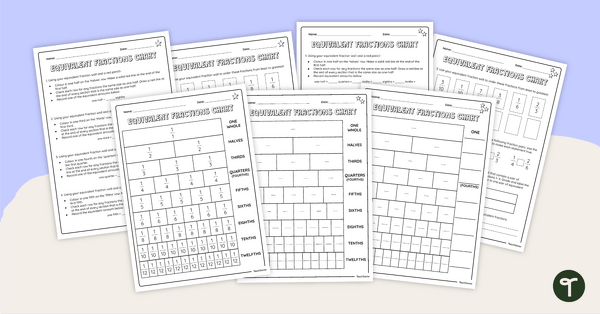
Equivalent Fractions Chart – Differentiated Worksheets
Use a fraction wall to practise finding equivalent fractions and comparing fractions with this set of differentiated worksheets.
- Plus Plan
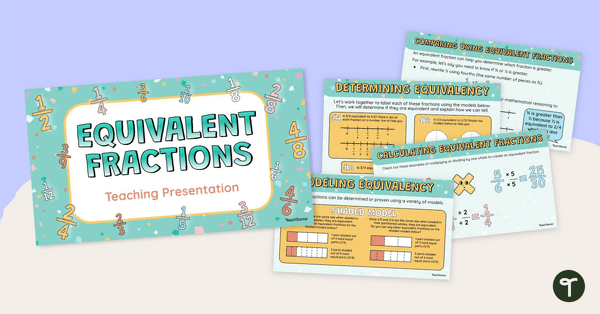
Equivalent Fractions – Teaching Presentation
Teach your students how to find equivalent fractions by using a number line, shaded models or a fraction chart with this teaching presentation.
- Plus Plan
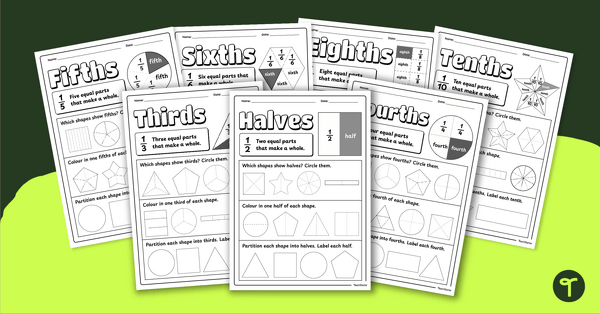
Introduction to Unit Fractions Worksheet Pack
Introduce your students to unit fractions with this set of teacher-created worksheets.
- Plus Plan
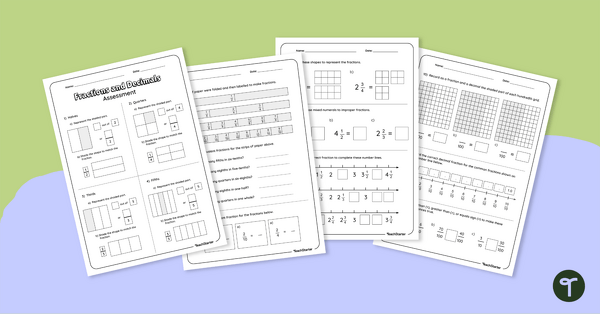
Fractions and Decimals Assessment
Assess students' knowledge of various decimals and percentages concepts with this four-page worksheet.
- Plus Plan
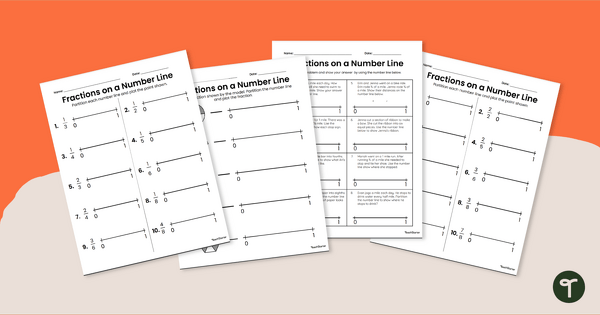
Fractions on a Number Line Worksheets
Represent fractions greater than zero and less than or equal to one with a pack of fraction number line worksheets.
- Plus Plan
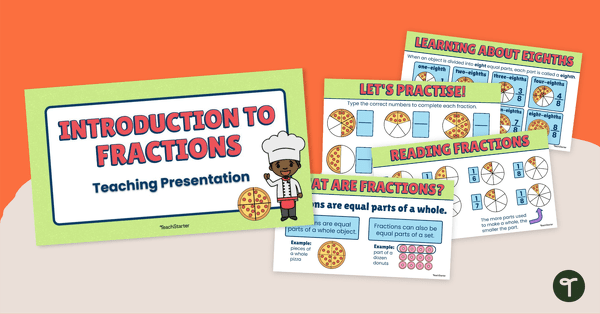
Introduction to Fractions – Interactive Teaching Presentation
Use this teaching presentation to teach your students how to identify the parts of a fraction, determine equal and unequal parts and use numerators and denominators to write fractions.
- Plus Plan
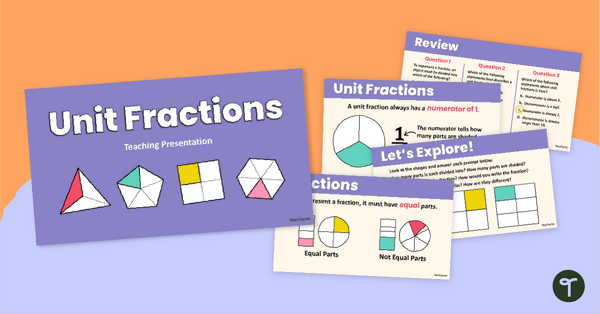
Unit Fraction Teaching Slides
Teach your students all there is to know about unit fractions using this detailed set of teaching slides.
- Plus Plan
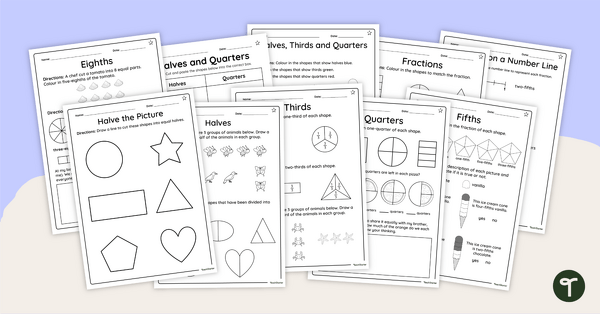
Fractions Worksheet Pack – Differentiated
Practise partitioning shapes, shading in fraction models, representing fractions on a number line and more with this set of differentiated worksheets.
- Free Plan
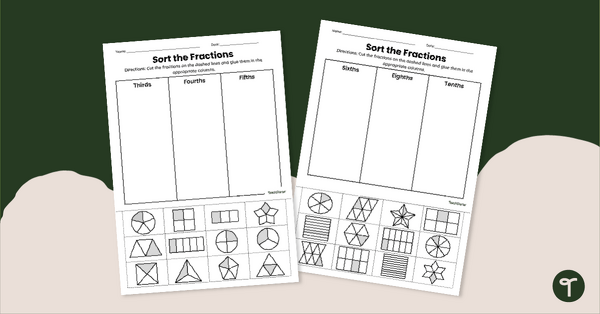
Sorting Unit Fractions Cut and Paste
Sort different unit fraction visualisations with these cut-and-paste unit fraction worksheets.
- Plus Plan
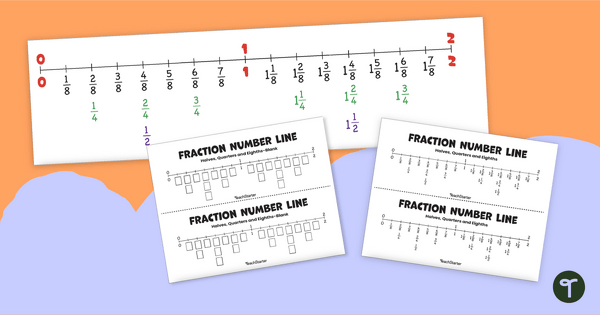
Fractions Number Line - Halves, Quarters and Eighths
Demonstrate the concept of fractions on a number line with a printable number line display and student reference sheets.
- Plus Plan
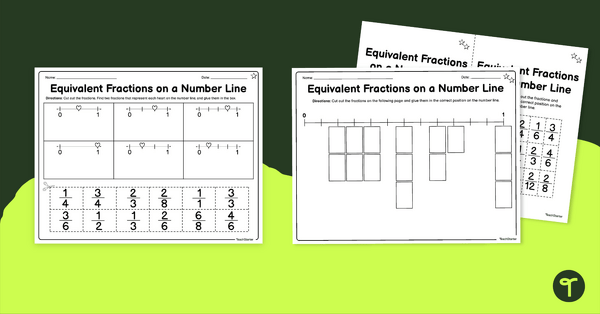
Equivalent Fractions on a Number Line – Differentiated Worksheets
Practise placing equivalent fractions on a number line with this cut-and-paste worksheet.
- Plus Plan
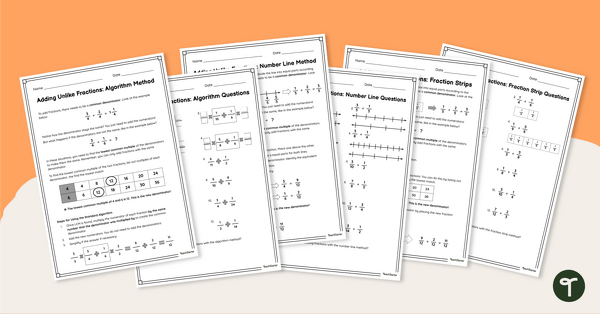
Adding Fractions with Unlike Denominators Worksheet Pack
Download this set of adding fractions with unlike denominators worksheets to help your students practise this important maths skill.
- Plus Plan
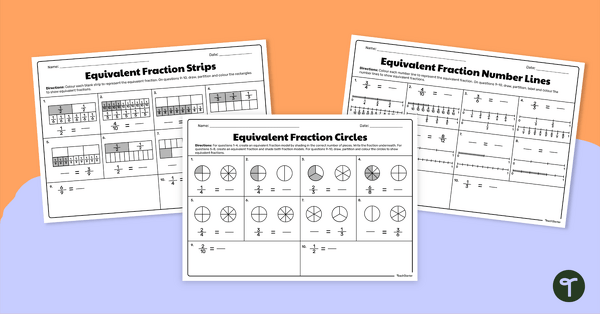
Equivalent Fractions – Worksheet Pack
Use fraction models, strip diagrams and number lines to determine equivalent fractions with this worksheet pack.
- Plus Plan

Adding and Subtracting Fractions Worksheets
Use these adding and subtracting fractions worksheets to enable your students to practise this important skill.
- Plus Plan
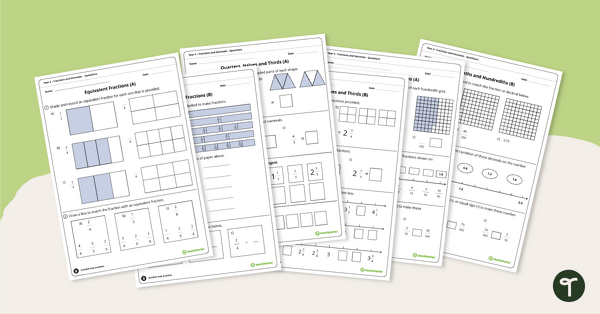
Year 4 Fractions and Decimals Worksheets
Use these fractions and decimals worksheets in your Year 4 classroom for independent practice or as an assessment activity.
- Plus Plan
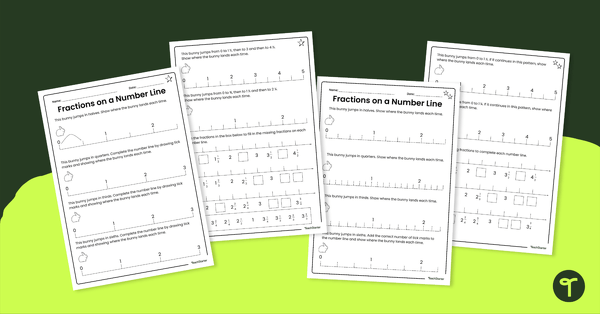
Fractions on a Number Line – Differentiated Worksheets
Practise plotting and counting by fractions on a number line with this set of differentiated worksheets.
- Plus Plan
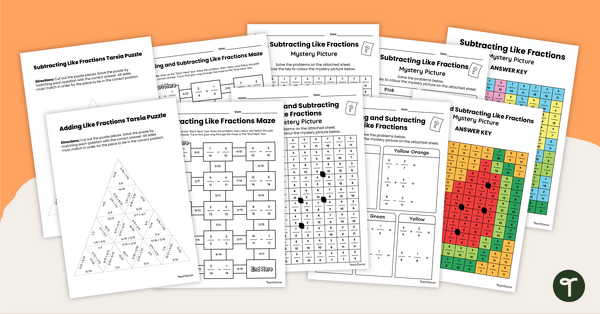
Adding and Subtracting Like Fractions Puzzle Pack
Get your students adding and subtracting fractions with like denominators with this set of nine fraction puzzles!
- Plus Plan
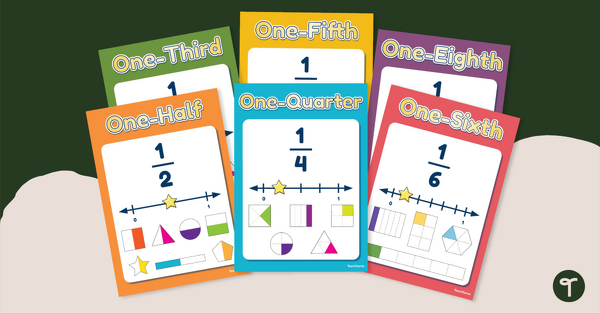
Unit Fractions – Poster Pack
Display unit fraction models with this set of 6 classroom posters.
- Plus Plan
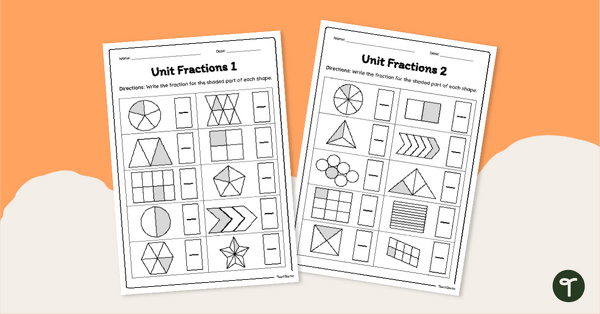
Label the Unit Fraction Worksheets
Label different unit fractions with this set of student worksheets.
- Plus Plan
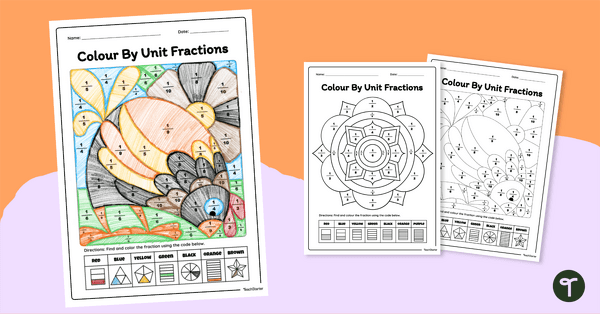
Unit Fraction Colouring Sheet
Crack the colour code and practise unit fractions all while colouring in fun images.
- Free Plan
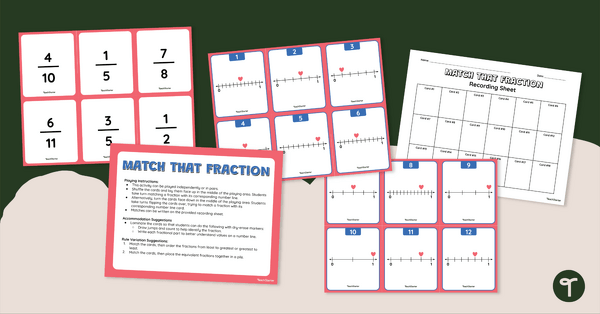
Match That Fraction! – Number Line Activity
Match fractions with their corresponding locations on a number line with a set of fraction task cards.
- Plus Plan
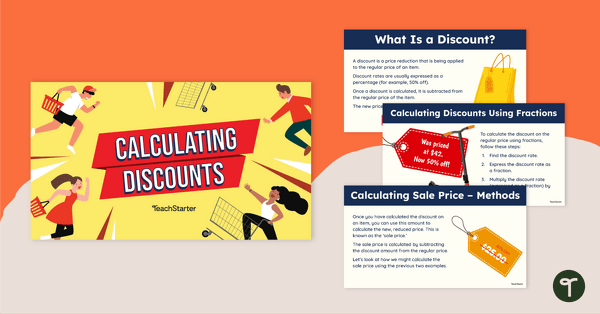
Calculating Discounts and Sale Price Teaching Slides
Teach your students how to calculate discounts and sale prices using fractions and decimals with this comprehensive teaching presentation.
- Plus Plan
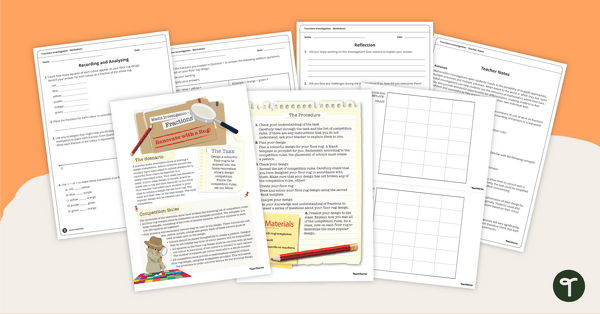
Adding and Subtracting Fractions Maths Investigation — Renovate with a Rug!
Immerse your students in all things fractions with this maths project based around a real-world scenario.
- Free Plan

Fractions of a Collection – Cut and Paste Worksheets
Use these printables to explore how sets of objects can be partitioned into different fractions.
- Free Plan
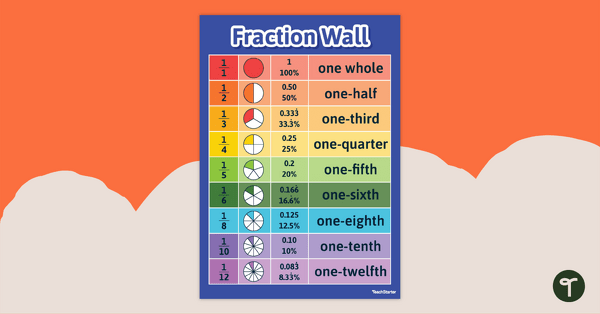
Representations of Unit Fractions Poster
Display this free poster in your classroom showing representations of common unit fractions.
- Free Plan
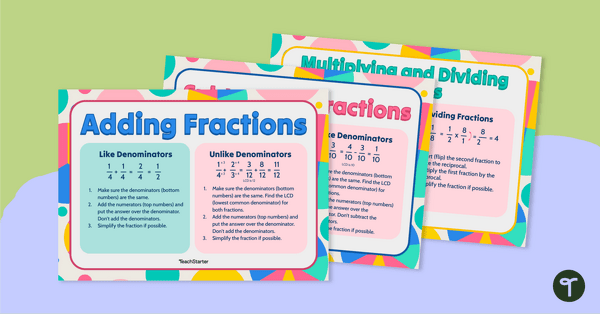
Adding, Subtracting, Multiplying and Dividing Fractions Posters
Display these fractions posters in your classroom to remind your students how to perform operations with like and unlike fractions.
- Plus Plan
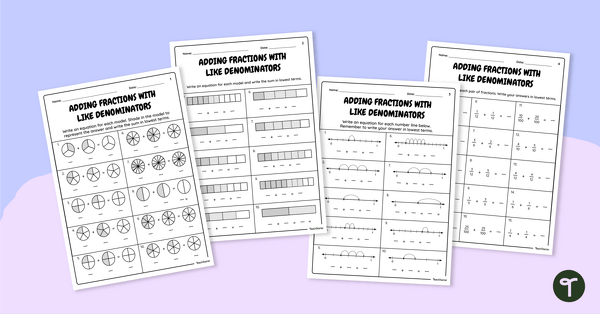
Adding Fractions With Like Denominators Worksheets
Download this set of adding fractions with like denominators worksheets to help your students practise this important maths skill.
- Free Plan

Types of Fractions – Poster
Display information about proper fractions, improper fractions and mixed numerals with this free maths poster.
- Plus Plan
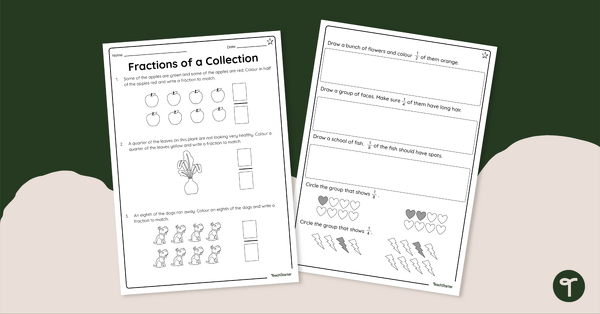
Fractions of a Collection – Differentiated Worksheets
Differentiated worksheets that focus on fractions of collections.
- Plus Plan
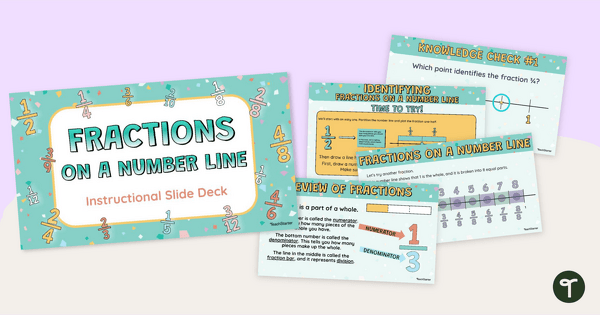
Fractions on a Number Line - Instructional Deck
Teach your students how to identify and work with fractions on a number line with an interactive, explicit instructional teaching presentation.